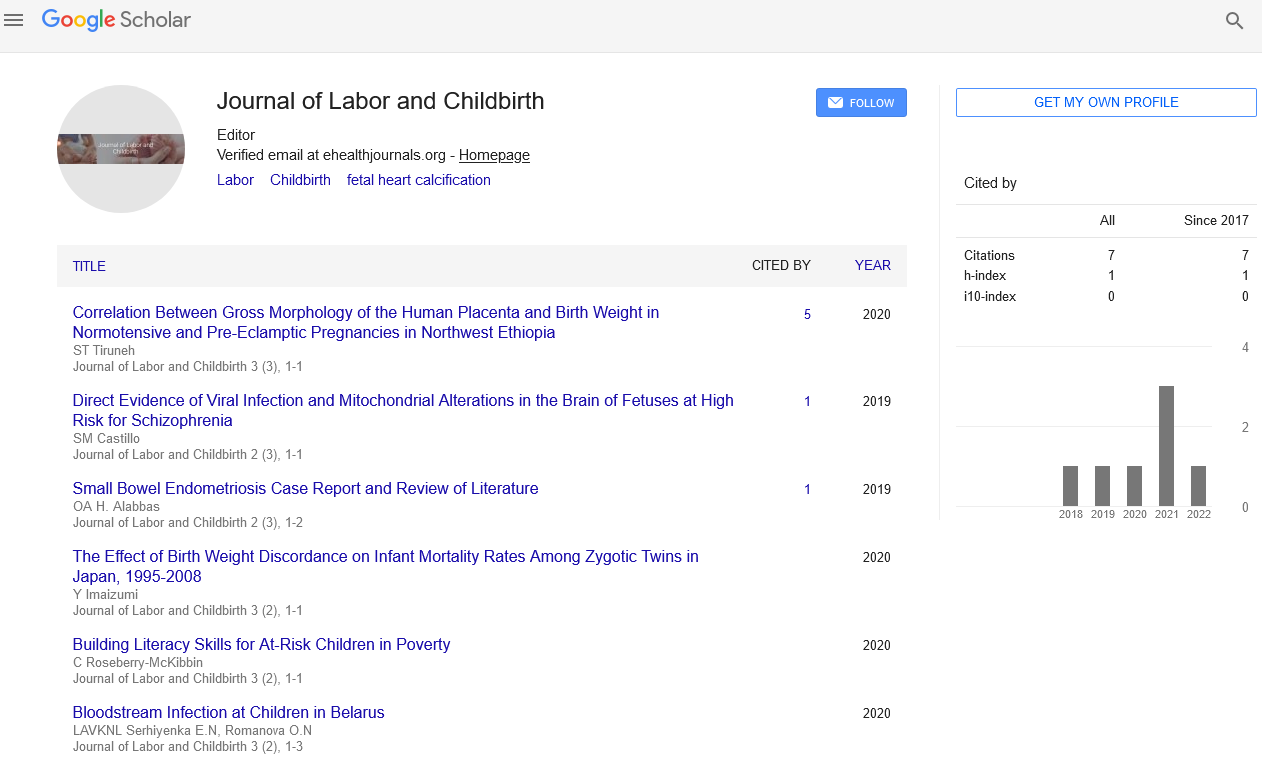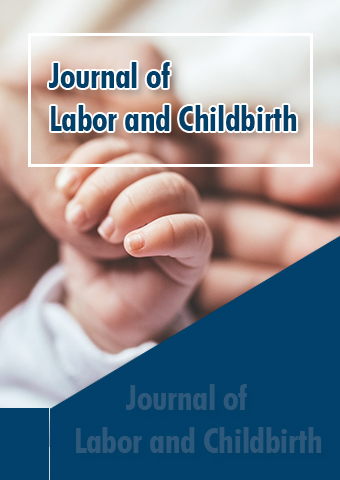Perspective - Journal of Labor and Childbirth (2023) Volume 6, Issue 5
Artificial Insemination: A Modern Technique in Reproductive Science
- Corresponding Author:
- Anne Sophie
Department of Gynecology,
Mich University,
Horsens,
Denmark
E-mail: asl.eco@cbs.dk
Received: 04-Sep-2023, Manuscript No. jlcb-23-118896; Editor assigned: 07-Sep-2023, PreQC No. jlcb-23-118896 (PQ); Reviewed: 21- Sep-2023, QC No. jlcb-23-118896; Revised: 03-Oct-2023, Manuscript No. jlcb-23-118896 (R); Published: 31-Oct-2023, DOI: 10.37532/ jlcb.2023.6(5).133-134
Introduction
The field of re productive sc ience ha s ma de remarkable strides over the years, providing countless couples with the opportunity to build the families they’ve always dreamed of. One of the most ground breaking techniques in this field is artificial insemination. Artificial insemination, also known as Intrauterine Insemination (IUI), is a procedure that involves introducing sperm into a woman’s reproductive tract to facilitate fertilization. This innovative method has changed the landscape of fertility treatments, making parenthood possible for many who may have otherwise struggled to conceive. In this article, we will delve into the world of artificial insemination, exploring its history, procedures, benefits and the ethical considerations surrounding it.
Description
The history of artificial insemination
Artificial insemination has a long and fascinating history, dating back to the early 18th century. The earliest recorded case of artificial insemination was in 1770 when John Hunter, a Scottish surgeon and anatomist, performed an experiment involving the insemination of a dog. His work laid the foundation for future developments in the field of reproductive science.
Over time, the concept of artificial insemination expanded to human fertility. The first documented successful human artificial insemination took place in 1884 when Dr. William Pancoast of Philadelphia helped a husband with a low sperm count to father a child. While early methods of artificial insemination were far from the sophisticated procedures used today, they paved the way for the development of modern techniques.
Modern artificial insemination procedures
Artificial insemination techniques have come a long way since their inception, thanks to advancements in technology and our understanding of reproductive biology. There are two primary methods of artificial insemination used today: Intrauterine Insemination (IUI) and Intracervical Insemination (ICI).
Intrauterine Insemination (IUI)
IUI is the most commonly used and advanced method of artificial insemination. The procedure involves several key steps:
Ovulation stimulation: The woman may receive hormonal medications to stimulate the ovaries and increase the number of mature eggs produced.
Sperm collection: The male partner or a sperm donor provides a semen sample. This sample is washed and processed in a lab to isolate healthy and highly motile sperm.
Insemination: The processed sperm is introduced into the woman’s uterus using a thin, flexible catheter. This is typically done at the time of ovulation when the chances of fertilization are highest.
Intracervical Insemination (ICI)
ICI is an older and less common method of artificial insemination. In this technique, processed sperm is placed directly into the cervix instead of the uterus. While less efficient than IUI, ICI may be a suitable option in some cases.
Benefits of artificial insemination
Artificial insemination offers numerous benefits to couples struggling with infertility or individuals who want to conceive for various reasons. Some of the key advantages include:
Non-invasive: Artificial insemination is a noninvasive procedure, which means it doesn’t require surgery or major medical interventions. This makes it a more accessible and less intimidating option for many couples.
Controlled sperm placement: By delivering sperm directly to the uterus, artificial insemination increases the chances of fertilization compared to natural conception, especially for couples facing male infertility issues.
Male fertility issues: IUI is particularly helpful for couples dealing with male infertility problems, such as low sperm count, reduced sperm motility or erectile dysfunction. It can bypass these issues by delivering a concentrated sample of healthy sperm directly to the site of fertilization.
Timing ovulation: Artificial insemination allows for precise timing of the procedure to coincide with the woman’s ovulation cycle, maximizing the chances of conception.
Genetic considerations: Artificial insemination can be used with sperm from a donor if a male partner has a genetic disorder that could be passed on to the child. This ensures a healthy genetic background for the offspring.
Ethical and social considerations
While artificial insemination offers immense benefits, it also raises ethical and social considerations that deserve attention.
Donor sperm: The use of donor sperm in artificial insemination can lead to questions about the identity of the biological father and the child’s right to know their genetic heritage. Many countries and states have regulations in place to address these concerns, such as allowing donor-conceived children to access information about their biological parents at a certain age.
Multiple births: Ovulation stimulation in artificial insemination can lead to multiple eggs being released, increasing the risk of multiple pregnancies. This poses health risks to both the mother and babies. Proper monitoring and regulation are essential to mitigate these risks.
Selective reduction: In cases of multiple pregnancies, selective reduction may be discussed, which involves reducing the number of fetuses to improve the chances of a healthy pregnancy. This is a complex and ethically charged decision.
Consent and autonomy: The informed consent of all parties involved in artificial insemination, including donors, recipients and surrogates, is crucial. Ensuring that everyone understands the process and its implications is essential.
Conclusion
Artificial insemination has revolutionized the field of reproductive science, providing hope and assistance to individuals and couples struggling with infertility. With its long history and ongoing advancements, this technique offers a range of benefits, from non-invasiveness to controlled sperm placement, making it an attractive option for many. However, it also presents ethical and social considerations that require careful navigation and regulation. As technology continues to evolve, the field of artificial insemination will undoubtedly keep expanding, offering new opportunities for individuals to realize their dreams of parenthood while addressing the associated challenges and ethical dilemmas.

